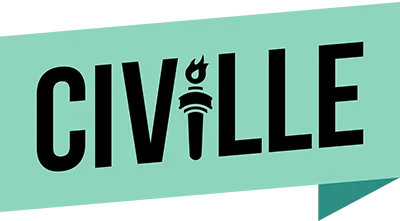
For the last fifteen years, law firm marketing has been obsessed with a single, up-and-to-the-right line on a graph: Organic Traffic. You wanted more clicks. You wanted more visitors. If the number went up, you were winning. If it went down, you fired your agency.
In 2026, that graph may be lying to you.
If you are still judging your firm’s success by the raw number of people hitting your website, you are measuring the past. The game has fundamentally changed. The era of “volume” is dead, killed by Google’s AI Overviews and the rise of answer engines like ChatGPT. We have entered the era of “verification.”
The new battleground isn’t about getting a stranger to click a blue link. It’s about getting an AI to cite your name.
The Great “Click” Recession
Let’s look at the reality of search today. A huge percentage of the “traffic” you used to fight for has evaporated. Why? Because the questions that used to drive those clicks, “What is the statute of limitations in Texas?” or “How much does a divorce cost?” are now being answered instantly by AI right on the search results page.
This is the “Zero-Click” phenomenon. The user gets their answer and leaves. They never visit your site.
Your instinct might be to panic. “I’m losing 30% of my traffic!” But you need to ask yourself the hard question: Was that traffic ever going to hire you?
Probably not. That was tire-kicker traffic. It was people looking for free information, not legal representation. The AI has effectively built a wall around your firm that filters out the noise. The “recession” in clicks may be a purification of your lead flow.
The Rise of the “Citation Lead”
So, if the volume is gone, where are the clients? The potential clients are still there, but their journey has changed. They are no longer wading through ten blue links. They are reading a synthesized answer from an AI.
When an AI answers a complex legal question, “Who is the best complex litigation firm in Chicago?” or “What should I do after a catastrophic truck accident?” it doesn’t just guess. It reads the internet, evaluates authority, and synthesizes a response. Crucially, it often cites its sources.
This citation is the new click.
When a user sees your firm cited as the source of truth in an AI answer, something powerful happens. They aren’t just finding you. They are being referred to you by the smartest machine on the planet.
A visitor who clicks a Citation Link from an AI Overview or ChatGPT is fundamentally different from a visitor who clicks a random search result.
- They are pre-qualified. They have already read the summary. They know the basics.
- They are high-intent. They aren’t looking for info. They are looking for you.
- They are pre-sold. The AI has already vouchsafed your expertise.
Data from early adopters suggests that while traffic volume from these sources is lower, the conversion rate can be 4x to 5x higher than traditional search traffic. These aren’t window shoppers. These are buyers.
How to Measure AI Success For Your Law Firm
The “Landing Page” Pivot: Stop Selling, Start Validating
This shift to citation-based leads demands a complete rethink of your website’s design philosophy.
For the last decade, law firm websites were built to persuade. We assumed the visitor was a cold lead who stumbled upon a blog post. We used aggressive pop-ups, lengthy sales copy, and “hard sell” tactics to convince them we were competent.
The “Citation Visitor” is different. They don’t need to be persuaded. They need to be validated.
When a user clicks a link from an AI that has already vouched for you, they arrive with a baseline of trust. Your website’s job is not to hype them up, but to confirm the AI’s recommendation immediately.
If they arrive at your site and see a generic, stock-photo-heavy page that looks like every other firm in town, you break the spell. You create cognitive dissonance. “The AI said this firm was the authority, but this looks like a template.”
To convert the Citation Visitor, your site needs:
- Instant Social Proof: Awards, badges, and testimonials should be visible immediately, not buried in the footer.
- Human Connection: High-quality photos of your actual team, not models. The visitor wants to see the expert the AI mentioned.
- Frictionless Contact: They are ready to act. Don’t hide your phone number. Don’t make them fill out a 10-field form. Give them a direct line to the solution.
The New Playbook: How to Win the “Citation Game”
If citations are the new gold standard, how do you get them? You can’t buy them. You can’t “SEO trick” your way into them. Your firm has to earn them by becoming a Digital Entity of Authority.
1. Shift from “Keywords” to “Information Gain”

Old SEO was about repeating keywords. AI SEO is about Information Gain. AI models are voracious readers. They are looking for new information to add to their knowledge base. If your blog post just repeats the same generic advice as the other 50 firms in your city, the AI has no reason to cite you.
To earn a citation, you must provide unique value.
- Original Data: “We analyzed 500 local DUI cases and found…”
- Contrarian Insight: “Why the standard advice about pleading guilty is wrong in this specific county.”
- Deep Specificity: “The step-by-step process for probate in [Specific County] Courthouse.”
2. Become an Entity, Not Just a Website
Google’s AI doesn’t just look at your website. It looks at your footprint. It is trying to build a “knowledge graph” about your firm. Is this a real, respected entity?
- The “Everywhere” Consistency: Your Name, Address, and Phone (NAP) data must be flawless across every directory, bar association, and social profile. Any discrepancy confuses the AI.
- The Reputation Loop: Reviews are no longer just for humans. AI reads them to understand your sentiment and expertise. “Best lawyer for custody battles” in a review helps the AI associate your entity with that topic.
- Digital PR: Being mentioned (even without a link) in local news, reputable legal journals, or authoritative podcasts tells the AI, “This entity is important in the real world.”
3. Structure Your Site for a Machine Reader
You might be the smartest lawyer in the room, but if your website is a mess, the AI can’t hear you. You need to speak its language. This means using Schema Markup.
Schema is code that tells the AI explicitly: “This text is a Lawyer,” “This text is a Review,” “This text is an Answer to a FAQ.” It’s like handing the AI a highlighted map of your expertise. Firms that use rigorous schema markup are vastly more likely to be pulled into AI Overviews because they are easy for the machine to parse and verify.
The High Cost of Being Average
There is a dark side to this evolution. In the era of the “10 Blue Links,” you could survive by being average. If you were the 4th or 5th best firm in town, but you had a decent SEO budget and wrote enough generic blog posts, you could still scrape together enough traffic to be profitable.
AI Search eliminates the middle class of content.
Generative AI is a “winner-take-all” dynamic. When it summarizes a topic, it looks for the best answer. It looks for the primary source. It doesn’t offer a “Page 2” of results.
If your content is good enough, if it’s just a slightly rewritten version of what your competitor posted last week, the AI will ignore it. It has no reason to cite the 15th best article on “How to file for divorce.” It will cite the best one.
This means the strategy of “volume content” is dead. Publishing four mediocre blog posts a month is now a waste of money. In 2026, you either strive to be the definitive source, or you accept invisibility.
The State of Law Firm Advertising in AI
The Future Is Smaller, But Better
This shift is terrifying for agencies that sell vanity metrics. It’s liberating for firms that do great work. At Civille, we build Authority Platforms. Our team designs websites and content strategies that are specifically engineered to earn citations from the next generation of search engines. We don’t just want you to be found. We want you to be the answer.





